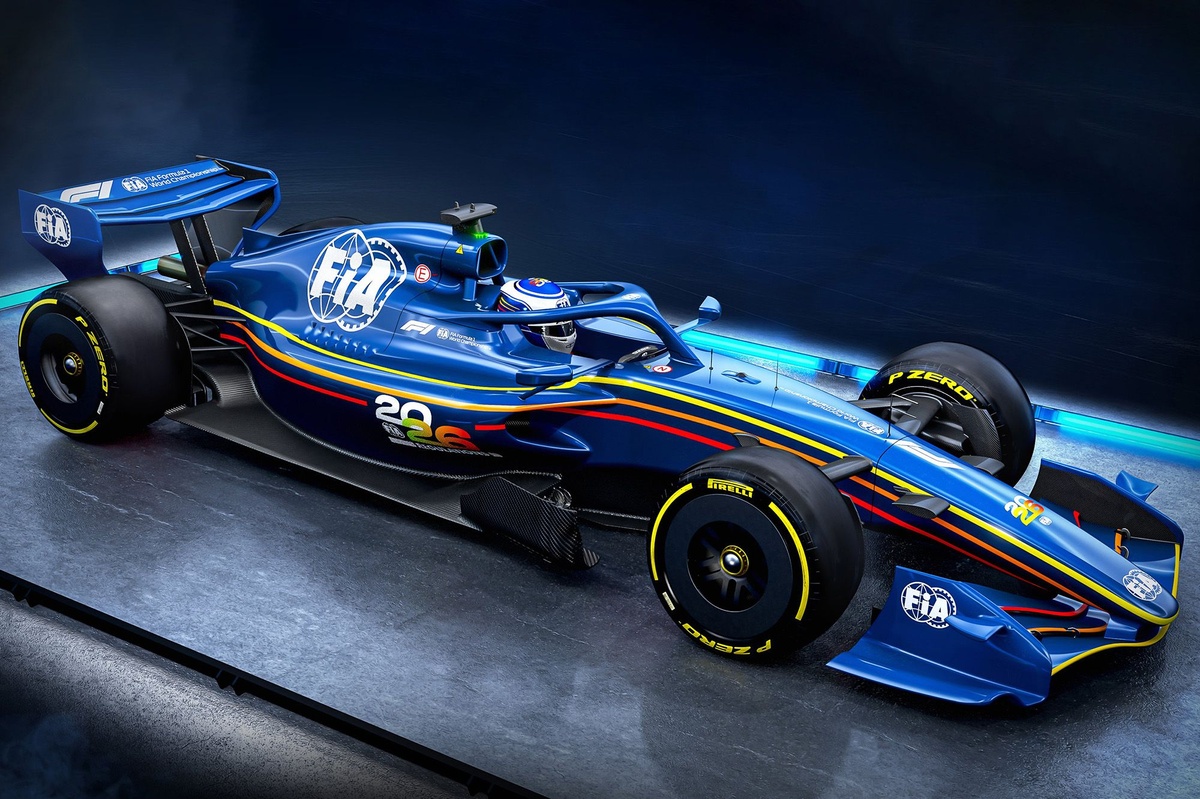Formula 1 has always been a sport defined by change. Cars evolve, regulations tighten, new drivers arrive, and circuits are re-imagined. After the seismic overhaul of technical regulations in 2022, fans might expect 2023 to be a calmer year in comparison.
But while the new season won’t bring a revolution as dramatic as last year’s ground-effect era reset, there is still an array of important changes—both technical and sporting—that will shape the championship in crucial ways.
From revised rules aimed at safety and sustainability, to a fresh batch of sprint races, to the much-anticipated Las Vegas Grand Prix, the 2023 Formula 1 season promises intrigue, innovation, and, inevitably, controversy. Let’s break down everything you need to know before the lights go out in Bahrain.

Technical Regulation Changes: Bouncing Be Gone
The most talked-about technical issue of 2022 was porpoising—or “aerodynamic bouncing.” When the new ground-effect cars first hit the track, several teams struggled with violent oscillations at high speed, shaking drivers in their cockpits and raising questions of safety. Mercedes in particular suffered badly, with Lewis Hamilton visibly wincing after the Azerbaijan Grand Prix.
The FIA has stepped in for 2023 with stricter technical measures designed to mitigate the problem. Teams now face tougher floor deflection tests, and the edges of car floors have been raised by 15mm. The aim is to reduce the downforce-induced flexing that triggers porpoising.
Not everyone is convinced this intervention was necessary. F1’s chief technical officer, Pat Symonds, publicly stated he believed the FIA “overreacted” after Baku. Many teams had already found solutions by the summer break, and critics argue that the changes were effectively forced by one high-profile team lobbying for action. Regardless, the tweaks will reshape aerodynamics, particularly around the floor and diffuser—two of the most performance-sensitive areas of a modern F1 car.
Other technical revisions include greater flexibility in gearbox design in case supply chains make specific materials unavailable, a lingering knock-on effect of the COVID-19 pandemic. Mirrors have also been enlarged to improve visibility and reduce blind spots, while roll hoop structures—vital for protecting drivers in rollovers—have been reinforced following Zhou Guanyu’s frightening Silverstone crash in 2022.
Finally, the minimum car weight has been reduced by 2kg. It sounds trivial, but considering the lengths teams went to last year—stripping paint, shaving carbon fibre—to meet the weight limit, this small change could have notable impacts on design.
Sporting Regulation Tweaks: Penalties, Qualifying, and DRS
If 2022 taught fans anything, it’s that even the teams themselves often don’t fully understand F1’s penalty system. At races like Spa and Monza, where multiple drivers took grid drops simultaneously, the resulting starting order confused everyone from pundits to paddock insiders.
The FIA has responded with a clarification: any driver who accumulates more than 15 grid penalties, or who is specifically told to start at the back, will be placed behind all other penalised drivers. It’s not a complete simplification, but it should reduce chaos on Saturdays.
Qualifying itself will also see an experiment at two races in 2023. Drivers will be forced to use hard tyres in Q1, mediums in Q2, and softs in Q3. The aim is to cut down on tyre waste without sacrificing spectacle. Pirelli’s motorsport boss Mario Isola has championed the change, describing it as “perfect” for sustainability while still leaving six fresh sets for the race.
Meanwhile, DRS rules in sprint races will also change. Instead of waiting two laps after a safety car period, drivers will now be able to activate DRS after just one green-flag lap. That could lead to more immediate overtaking opportunities, particularly when cars are tightly bunched after a restart. If successful, this change may eventually extend to full Grand Prix races.

Financial Regulations: Tightening the Belt
Formula 1’s cost cap, introduced in 2021, continues to be a hot topic. After Red Bull was penalised for breaching the 2021 budget, scrutiny has only increased. For 2023, the cap has been reduced further to $137.4 million, assuming the planned 23-race calendar goes ahead.
This reduction means teams must become even more efficient in how they spend. For smaller outfits, it levels the playing field slightly. For larger manufacturers like Mercedes, Ferrari, and Red Bull, it means careful resource allocation will be more crucial than ever.
Sprint Races Expand: Six in 2023
When sprint races were first introduced, they divided fans. Some loved the extra action on Saturdays, others dismissed them as gimmicks that risked spoiling the “main event” on Sunday. For 2023, however, F1 is doubling down—six sprint weekends are scheduled.
These will take place at:
Baku (April)
Red Bull Ring (July)
Spa (July)
Qatar (October)
Circuit of the Americas (October)
Interlagos (November)
Each promises to shake up the usual rhythm of a Grand Prix weekend. With qualifying moved to Friday and two competitive races on consecutive days, sprint weekends carry higher risk for teams and drivers. One misstep in a sprint can compromise the main race, while a clever gamble could reap double rewards.
New Faces and Driver Moves
Every new F1 season brings changes to the grid, and 2023 is no exception. A wave of rookies and reshuffles will give fans plenty to discuss. Nyck de Vries, fresh from an impressive one-off drive for Williams in Monza 2022, joins AlphaTauri. Oscar Piastri steps up to McLaren after a contractual tug-of-war that made headlines throughout last summer. Logan Sargeant becomes the first American driver in F1 since 2015, racing for Williams.
Meanwhile, veterans like Fernando Alonso continue to make bold moves—he joins Aston Martin, replacing Sebastian Vettel, who retired at the end of 2022. The musical chairs among team principals has also kept the paddock buzzing, with leadership shakeups at Ferrari, McLaren, and Alfa Romeo.

Circuits and Calendar Highlights
The jewel of the 2023 calendar is undoubtedly the Las Vegas Grand Prix. Scheduled for Saturday, November 18th, the race will run through the neon-lit Strip, promising a spectacle unlike any other in the sport. It will also mark the first Saturday race in decades, designed for maximum prime-time entertainment in the United States.
Other tweaks to circuits include safety upgrades and reconfigurations aimed at improving overtaking. Combined with the extended calendar—23 races, the most in F1 history—the year will test drivers’ endurance as much as their speed.
What It All Means
So, what can we expect when the 2023 season roars to life? The technical rule changes may shuffle the order slightly, though most teams already understand how to manage porpoising. Expect closer racing with more consistent car performance, especially on bumpy circuits.
The sporting tweaks should bring clarity and sustainability, even if they are minor. The sprint race expansion will continue to divide opinion, but F1’s willingness to experiment is a sign of confidence in its growing global appeal. And the Las Vegas Grand Prix could be a landmark event, pushing Formula 1 further into mainstream American culture.
For the drivers, 2023 is a chance to prove themselves in a landscape of uncertainty. Can Red Bull maintain its dominance under stricter financial rules? Will Mercedes’ design tweaks solve their 2022 struggles? Can Ferrari finally convert pace into a title challenge? And which rookie will make the biggest splash?
Conclusion
Formula 1’s 2023 season may not bring the dramatic overhaul of 2022, but it carries a quieter kind of transformation—one defined by fine-tuning, sustainability, and spectacle. With new faces on the grid, iconic cities hosting races, and regulations evolving, fans are in for another year of relentless drama both on and off the track.
When the cars line up in Bahrain this March, they’ll represent not just engineering brilliance, but the sport’s constant balancing act between tradition and innovation. And that, ultimately, is the essence of Formula 1.





